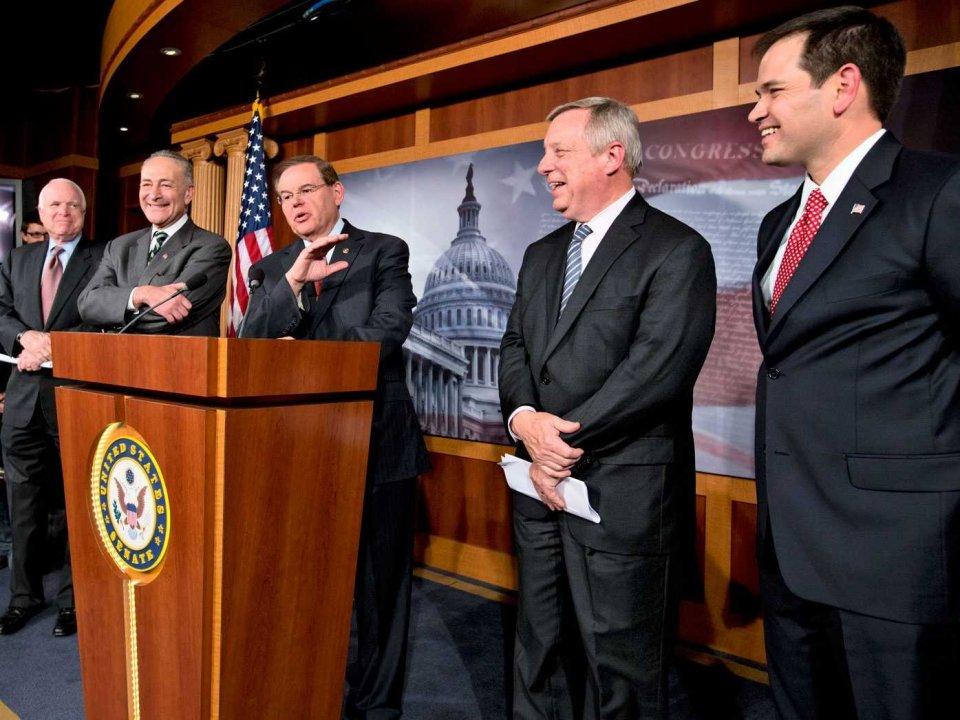Immigration reform has always been a heated topic within the halls of Washington. Nearly all Presidents in recent memory have sought immigration, but have only been met with resistance, and reform gets lost in heated debate. But now immigration reform comes into discussion again, and perhaps this time some type of reform can into fruition.
Latinos are now the fastest growing minority in the nation and make up over 15% of the nation’s population. They are the largest group of people immigrating to the U.S. Most Latinos, however, are native born, while others come predominantly from countries such as Mexico and Cuba. In addition, Latinos are the fastest growing block of voters, and are becoming vital to each party’s success.
For Republicans the Hispanic vote has been slipping away from them for a number of years. In 2004, George W. Bush won reelection with 44% of the Latino vote. That number, however, dropped to 31% in John McCain’s bid for the White House four years. More recently, last November, Mitt Romney garnered only 27% of the Latino vote.
Feeling the appetite for reform around the nation, Senators from both parties unveiled a comprehensive and bipartisan plan last month to address what they believed to be an outdated immigration system. Senate leaders had been meeting behind closed doors to devise a bill that they believe could pass with bipartisan support.
Labeling the plan “tough but fair,” Senators including Chuck Schumer (D-NY), Richard Durbin (D-IL), Marco Rubio (R-FL), Jeff Flake (R-AR), Lindsey Graham (R-SC), Michael Bennet (D-CO), Dirk Durbin (D-IL), and Robert Menendez (D-NJ) spoke out about how the plan would reform the immigration system for the first time in over twenty years.
The plan formed by both sides outlays a path to citizenship for the over eleven million illegal immigrants already in the United States. First, the new plan will require illegal immigrants to register for temporary legal status, which will require a background check and payment of a penalty fee to cover costs. Later, to obtain a green card, a commission comprised of regional leaders, governors, and attorney generals along the Southwestern border would give the thumbs up to the government that border security has been improved and up to par, along with other measures.
The reform essentially puts all illegal immigrants in the back of the line in terms of receiving a green card. In some cases, receiving a green card could take up to 20 years, depending on whether or not the applicant is being sponsored by someone, such as by a family member or employer. To help expedite the process, Senators want to help reduce the time for some people seeking legal status.
The reform also includes a mandatory employment verification system to help prevent further illegal immigration. Agricultural workers with non-verifiable employment and young immigrants, commonly referred to as “Dreamers”, are excluded from the plan.
In a speech from Las Vegas, President Obama echoed much of the same proposals, saying simply, “The time is now.” The President also requested that the plan require immigrants to wait eight years to receive a green card and then apply for citizenship five years after receiving one. Beyond that, the President seems to be line with much of the proposed reform.
Many politicians and pundits alike see a window opening that may allow them to pass bipartisan reform to the nation’s immigration system. The fight, as always, will be hard in Washington and the bill is complex and complicated. Senator Dirk Durbin of Illinois puts it simply,” It won’t be easy, it will take time and determination.”







